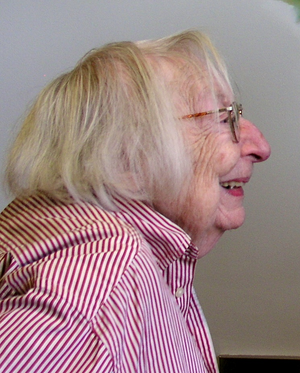 Image via WikipediaDefining principles: Remembering Mrs. Jacobs, The Power of Jane Jacobs’ “Web Way of Thinking”
Image via WikipediaDefining principles: Remembering Mrs. Jacobs, The Power of Jane Jacobs’ “Web Way of Thinking”(Michael Mehaffy, World Streets, Dec.23. 2011)
Also discussed here: Jane Jacobs
Although born as an American and having made significant contributions to the New York City landscape, Jane Jacobs is often fondly viewed by Canadians as one of their own and one of the main influences on how Toronto developed as one of the most multi-cultural cities in the world. Today, we feature a review and a list of Jane’s “lessons” for urban planners, thanks to Eric Britton at the World Streets blog and an article reprinted there by Michael Mehaffy. These tips provide the basis for a sustainable city in all respects.
Key Quotes:
“Jane Jacobs’ Top Ten Lessons:
- The city needs to maintain a continuous walkable fabric that promotes “thorough going city mobility and fluidity of use.”
- The antithesis of this approach is to create isolated “projects” or project neighborhoods – large, disruptive superblocks of monocultures, featuring artfully designed, unchangeable buildings, surrounded by amorphous no-man’s landscapes
- The best way to fight gentrification is not to demolish old buildings and build high rises, but to go into other depressed areas and regenerate them
- The city must not be treated as a work of art, or a sculpture gallery
- Zoning is not inherently bad, but should be liberal with regard to use, and prescriptive with regard to the way buildings address the street.
- Density is a valuable urban ingredient in context, but is not an end in itself.
- Sidewalk contacts are the small change from which a city’s wealth of public life may grow
- Diversity does not by itself guarantee avoidance of economic stratification
- We need to recognize that economic systems are feedback mechanisms for the values we seek, and we must treat economics as such – recognizing that there is as much danger in “money floods” as in “money droughts.”
- The capacity to solve our problems rests with the informal web of creative and regulatory relationships we have – our culture – and not with specialized “experts.”
Related articles
- The infinite city, cont'd: Welcome to the grid (bluejaysway.wordpress.com)
- 'Urbanized': sprawling views on urban planning (seattletimes.nwsource.com)
- Jane Jacobs (kavebagoly.wordpress.com)
- Jane Jacobs "Ideas That Matter" - Even More So Today (Book Review) (treehugger.com)
- The Death and Life of Great Public Servants (mischungltd.wordpress.com)

No comments:
Post a Comment